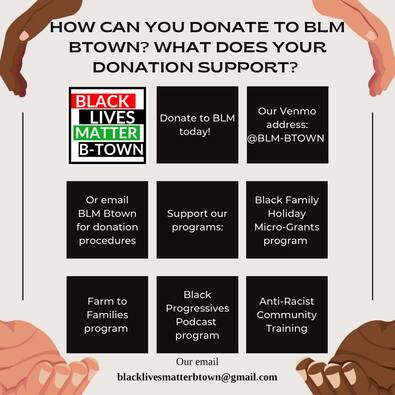|
BLM B-town was asked several questions about the Bridge Initiative Report and only a few selections of our answers were provided in the article and the context of them was somewhat skewed. So, below is our complete and uncut answers to the questions about the report. We feel you should see and know what BLM B-town is saying about all of these issues without the lens the media put forth. Here is the article: (click here) Here are our answers: Questions regarding the Divided Community Project report sent to BLM B-town by Emily Ernsberger from the HT Here is the Report mentioned in the questions BRIDGE REPORT 1) Overall, how do you feel about the report? Do you feel the issues laid out in the subsection "Visibility of African Americans in Bloomington/Loss of African American history in Bloomington" are accurate? Other sections?
2) What, if anything, do you feel like is missing? While this report is a brief overview of a lot of topics, do you think anything egregious was left out?
3) What are your views on the suggestion of a task force to cover the race issues laid out in the report? Would any of you be interested in joining one, were it formed?
4) Specifically regarding the farmers' market, there were many comments made at the Farmers' Market Advisory Council meetings this summer and on social media indicating that people of color never went to the market because they didn't feel safe. In the report, it is written that "many of the people with whom Mr. Johnson spoke, especially people of color, firmly dispelled this idea" and were instead not interested due to price and products. Do you feel this finding is correct? Or that both notions are? Other thoughts?
5) Is there anything else you'd like to add regarding the report/farmers market/etc?
BLM Aug 8th 2019 Letter about the Farmer’s Market https://blm.btown-in.org/blm-b-town-blog/letter-to-the-city-regarding-the-farmers-market-and-nazi-farmers-of-schooner-creek-farm |
AuthorBLM's Blog stay up to date about our projects, current local new and more Archives
May 2023
Categories |
 RSS Feed
RSS Feed
